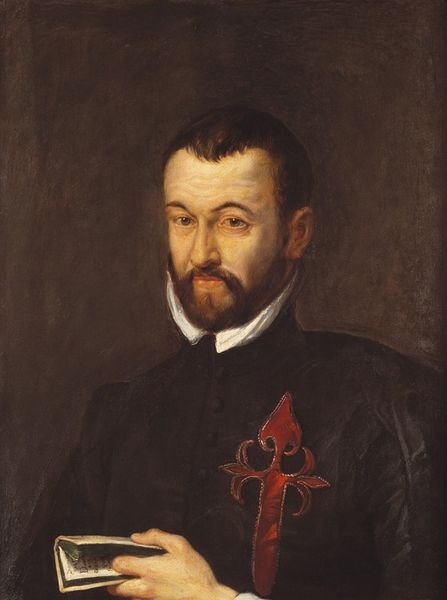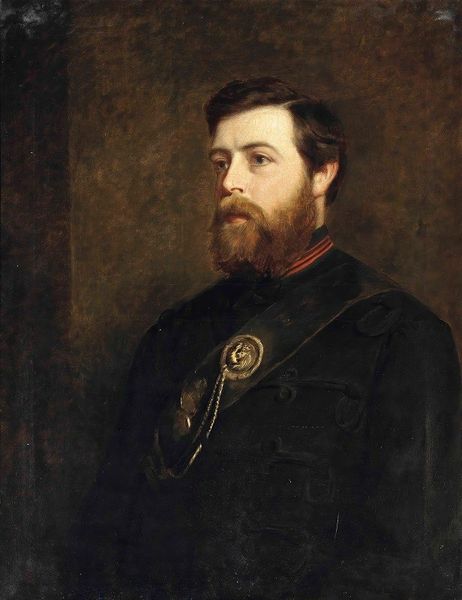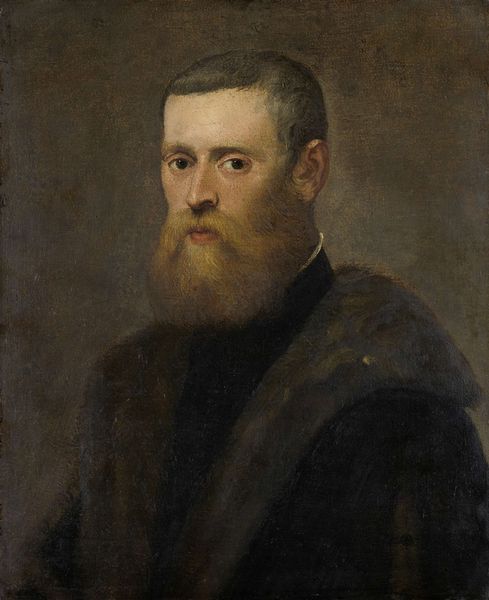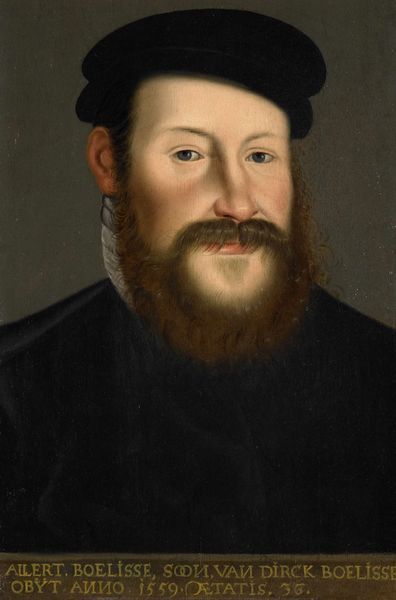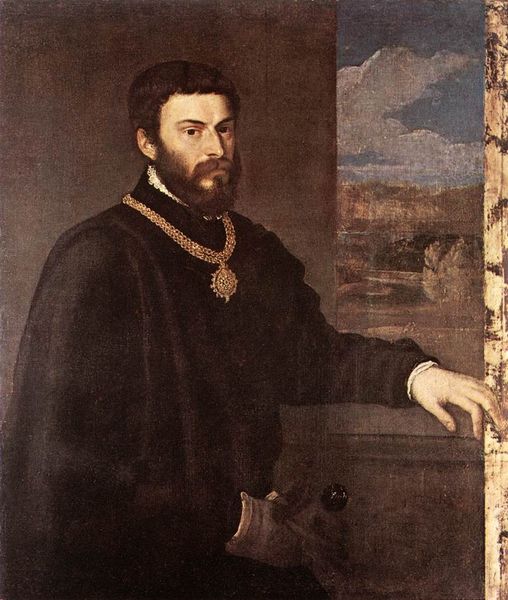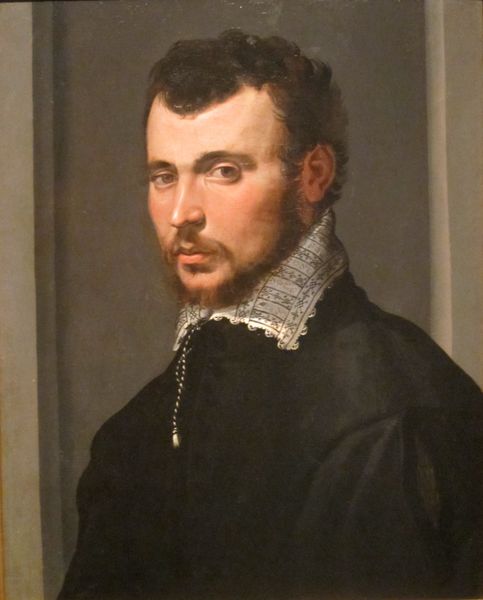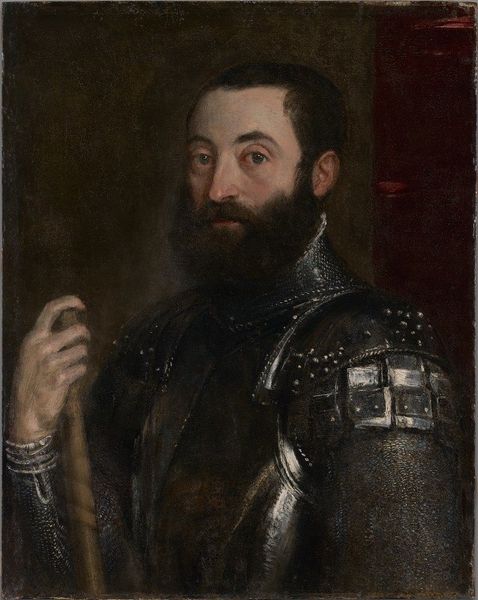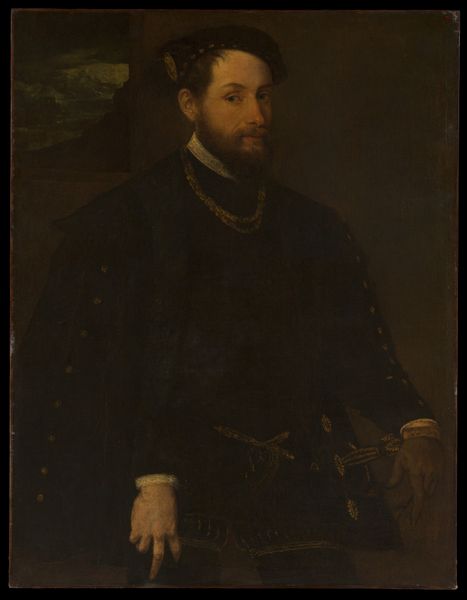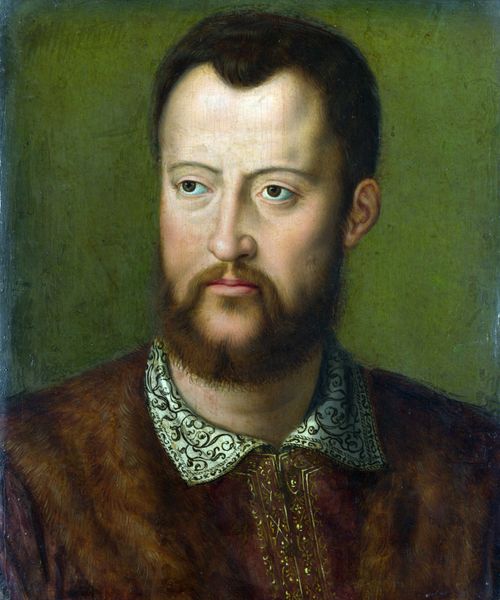
painting, oil-paint
#
portrait
#
venetian-painting
#
self-portrait
#
painting
#
oil-paint
#
mannerism
#
history-painting
#
academic-art
#
italian-renaissance
#
realism
Dimensions: 63 x 51 cm
Copyright: Public domain
Curator: Paolo Veronese's "Self-Portrait," created around 1563, currently resides in the Hermitage Museum. It's rendered in oil on canvas. My first thought? Stark. Stripped down. There's almost nothing to visually grab onto beyond the figure. Editor: The severe, almost severe, dark background forces all the attention onto Veronese's face and attire. The plain background throws his identity into high relief as he presents himself to posterity. Notice the rich, varied browns in his hair and beard. I see ambition, even pride, but tempered with intellect. What do you make of it? Curator: Absolutely. He's intentionally controlling our gaze. The near-absence of adornment directs focus on his facial structure and that penetrating gaze. But note, too, the arrangement of the buttons down his doublet and how it contributes to a controlled vertical movement that terminates precisely at the edge of the frame. The very precise lighting across his face seems deliberately deployed to draw you in and around. What cultural symbolism or history do you glean from this portrait? Editor: Veronese is declaring his status. The meticulous details of his lace collar and carefully arranged beard signal respectability. The hint of red on his sleeve - what could that symbolize? Blood, power, life itself? This feels like a conscious creation of persona, a Renaissance man shaping his image. It seems as though he almost offers us an austere reflection back into the past. Curator: And that restrained color palette really amplifies it. Veronese masterfully used light to reveal shape and volume, imbuing the figure with palpable weight within that very controlled space. Consider the implications in Venetian painting, how it challenged painting styles elsewhere with its intensity and drama. What feelings might this portrait have evoked for the original audience? Editor: Undoubtedly, this work evoked admiration and a sense of awe for the talent of Veronese. We feel that same sense of respect and appreciation today. It invites speculation about the cultural significance that personal identity had within that time. The "Self-Portrait" becomes a timeless reflection of the artistic consciousness, bridging us to the Renaissance world through art. Curator: I appreciate how exploring its formal components underscores how skillfully Veronese commands the viewer's gaze, even now. Editor: Yes, an icon silently but persuasively asserting himself through visual cues across centuries of history.
Comments
No comments
Be the first to comment and join the conversation on the ultimate creative platform.


